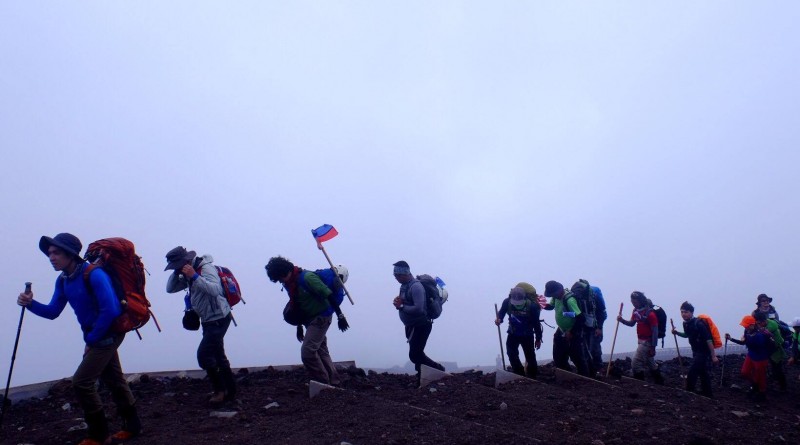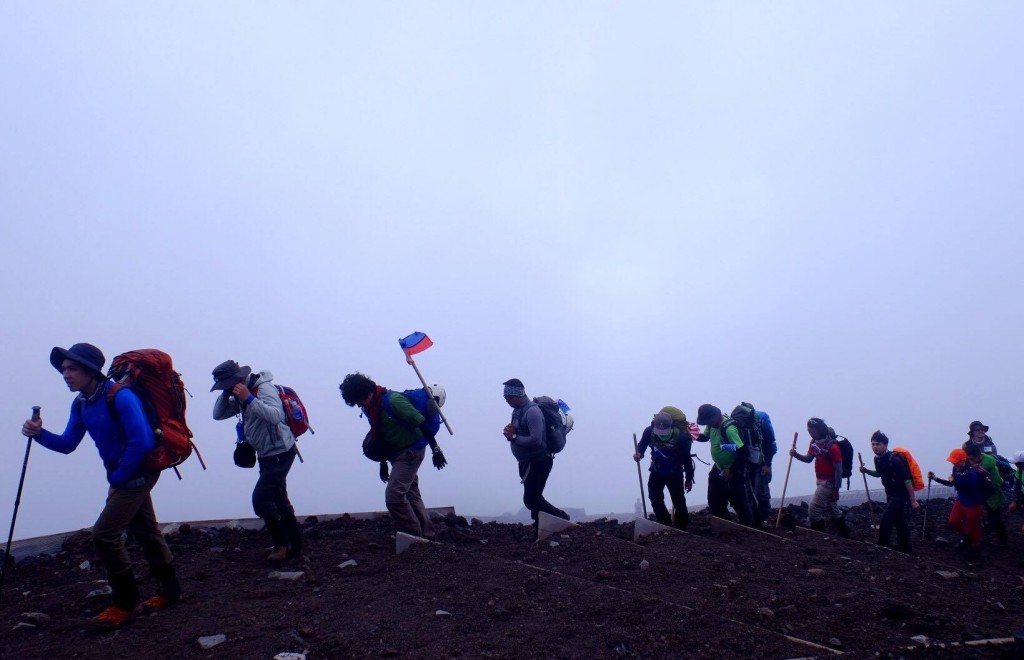Mountain traffic: Who has the ‘right of way’ on the trail?
by Gideon Lasco
One commonly overlooked issue when hikers meet other people on the trail is the question of ‘right of way’. This is especially salient for mountains that receive a lot of traffic, including Mt. Pulag and the Rizal mountains (i.e. Pamitinan, Maynoba, et. al) – but it is also very pertinent to all kinds of trails, including those which hikers share with locals, mountain bikers, etc.
Fortunately, there are internationally-recognized rules on ‘right of way’ on the trails – as well as etiquette for overtaking – and they are actually actually very similar to driving rules. The general principle is to give way to those who have a greater burden (i.e. hikers with a heavier load), or those who have a fewer options to maneuver.
HIKERS VS. LOCALS
Hikers are expected to give way to locals who are going about their everyday lives in the mountains (i.e. transporting ). Hikers are particularly expected to give way to locals with horses or carabaos.
HIKERS VS. MOUNTAIN BIKERS
Bikers / cyclists are expected to give way to hikers. When they are on the same direction, bikers overtaking hikers should announce their approach way ahead.
ASCENDING VS. DESCENDING HIKERS
Hikers going uphill have the priority. Ascending up a steep trail requires more effort than going down, and thus it is more inconvenient for hikers going up to pause, change their speed, and/or find a spot to pause. Moreover, hikers going up have a more limited field of view compared to those going down, and thus they have less time and opportunity to think of a place to stop.
However, in many instances, ascending hikers who want to rest anyway can give way to those descending. There are also some instances when the descending hikers are in a more unstable position (i.e. when descending on a very steep trail). Furthermore, experienced hikers may also choose to give way to hikers who are clearly struggling regardless of their direction. The applicability of this rule, thus, can vary depending on the situation, but what’s important for both sides to recognize is that people going uphill generally have the right of way.
SLOW-MOVING VS. FAST-MOVING HIKERS
Slow-moving hikers are expected to give way to fast-moving hikers as long as it is safe and convenient for them to do so. In fact, hiking groups are expected to walk in single file and occupy as little of the trail as possible so as to give way to others who are passing through.
Needless to say, non-moving hikers should give way to those who are actually moving. Thus, people who are merely taking pictures on the trail should definitely give way to those who are hiking. Indeed, whenever a hiker will stop to rest or take pictures, s/he should move off the trail.
The important principle here is to be sensitive to the people behind on the trail and allow them to overtake you if it’s clear that they want to do so.
CULTURAL DIFFERENCES
Hiking conventions tend to follow road traffic ones: In Philippines, as in the US and other countries with right-hand traffic, hikers are expected to stay to the right, and pass on the left – just like in motor traffic (i.e. in the Philippines where faster vehicles overtake on the left).
BOTTOM LINE
Ultimately, all these principles boil down to the spirit of kindness. Actually, regardless of the rules, if you’re not in a hurry, you can always choose to give way to others. And even if you have the right of way, it won’t hurt to be courteous about asserting yourself. Remember, responsible outdoor recreation involves respecting other people, including their time and their right to enjoy the trail as much as you do.




Leave a Reply
Be the First to Comment!